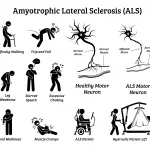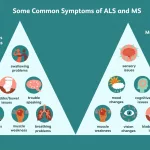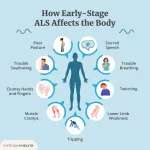Ever wondered why some people see the world in a slightly different palette? “Color blindness” isn’t just one thing – it’s a family of color vision deficiencies that change the way reds, greens, blues, or even every hue looks. In the next few minutes you’ll learn exactly what the main color blindness types are, why they happen, how they’re spotted, and what you can actually do about them. Grab a coffee, settle in, and let’s chat about those colors you might be missing.
Quick Vision Overview
What is color vision?
Our eyes are tiny light‑catchers equipped with two main players: rods (for low‑light vision) and cones (for color). We have three kinds of cones—S (short wavelength, sees blues), M (medium, sees greens) and L (long, sees reds). When all three work together the world bursts into millions of shades, a state scientists call trichromacy. If one or more cone types are under‑performing, the brain receives a skewed signal and we end up with a color‑vision deficiency.
Why “color blindness” isn’t the whole story
Doctors prefer the term color vision deficiency because true blindness to all color (monochromacy) is exceedingly rare. Most of us who say “I’m color blind” actually have a specific pattern of cone loss or mis‑alignment. Knowing the exact pattern helps us choose the right tools, whether it’s a pair of tinted glasses or a smartphone app that flags problematic hues.
Normal vision vs. deficiency
| Aspect | Normal Trichromacy | Red‑Green Deficiency | Blue‑Yellow Deficiency | Monochromacy |
|---|---|---|---|---|
| Cones Affected | All three (S, M, L) | M or L cone reduced or missing | S cone reduced or missing | All cones missing or non‑functional |
| Typical Confusions | None | Red vs. green, brown vs. orange | Blue vs. yellow, purple vs. red | Only shades of gray |
| Prevalence | ~92 % of population | ≈8 % of white males | ≈0.1 % of population | ≈1 in 30,000 |
Main Color Types
Red‑Green Color Vision Deficiency
This is the most common group, accounting for roughly 99 % of all diagnosed cases. It splits into two families:
- Deuteranomaly / Deuteranopia – the M‑cone (green) is altered or absent.
- Protanomaly / Protanopia – the L‑cone (red) is the one that’s off‑kilter.
People with these forms often see reds and greens as muddled browns or grays, which explains why the infamous “dress” debate sparked so many heated comments on social media. In everyday life, distinguishing a stop light’s red from a street sign’s green can become a subtle safety concern.
Blue‑Yellow (Tritan) Color Vision Deficiency
Much rarer than red‑green, the tritan family affects the S‑cone that detects short‑wavelength (blue) light. The two subtypes are:
- Tritanomaly – reduced blue sensitivity.
- Tritanopia – almost no blue perception.
If you’re in this group, you might mix up blue and green or think a yellow‑green fruit is just plain yellow. Designers love to mention tritanopia when they pick color palettes for safety signage, because a poor choice can render an important warning invisible to a small slice of the population.
Complete Color Vision Deficiency (Monochromacy/Achromatopsia)
Here, all three cone types are non‑functional, so the visual world collapses into greyscale. This condition often comes with extra challenges: heightened light sensitivity (photophobia) and reduced visual acuity. It’s so uncommon that most eye‑care professionals will only encounter a handful in a career.
Color Blindness Causes
Inherited (genetic) factors
Almost 90 % of cases are passed down from parents. The classic red‑green pattern follows an X‑linked recessive inheritance, which is why men are far more likely to be affected. Specific gene mutations—OPN1LW, OPN1MW for red/green and OPN1SW for blue—disrupt the production of photopigments inside the cones.
Acquired causes
Not everything is written in your DNA. Certain eye diseases (glaucoma, macular degeneration), medications (hydroxychloroquine, some antibiotics), and even traumatic brain injury can impair cone function later in life. If you notice a sudden shift in color perception, it’s wise to schedule an eye exam promptly.
Who’s at risk?
Men, especially those of Northern European ancestry, top the risk chart for red‑green deficiency. A 2014 prevalence study highlighted that about 8 % of white males carry some form of this condition, while less than 1 % of females do. Ethnic background, age, and exposure to certain chemicals also play a part in the less common blue‑yellow and acquired forms.
How to Diagnose
Clinical tests you’ll encounter
When you visit an optometrist, they’ll likely start with the classic Ishihara plates. These are circles of colored dots forming numbers that only people with normal red‑green vision can read. For more detailed analysis, specialists may use a Hardy‑Rand‑Rittler (HRR) test or an anomaloscope—a device that mathematically matches two colored lights to see if your brain can blend them correctly.
Online screening tools (quick but limited)
There are free web‑based tests that mimic Ishihara plates. They’re handy for a quick self‑check, but remember: screen brightness, color calibration, and ambient lighting can skew results. If a test flags a possible deficiency, book a professional exam to confirm.
When to see a professional
If you:
- Frequently mix up traffic‑light colors
- Struggle with tasks that rely on color coding (e.g., cooking, electrical wiring)
- Work in a field where accurate color perception is safety‑critical (pilots, electricians, graphic designers)
…then an eye‑care visit is the responsible next step.
Treatment & Management Options
No cure, but plenty of help
Because the underlying cone issue can’t be “fixed” with medicine, we focus on tools that enhance contrast or translate color information into other cues.
Specialized lenses
Brands like EnChroma and Pilestone sell tinted glasses that shift certain wavelengths, making reds and greens more distinguishable for many users. They aren’t a miracle cure, but many people report a noticeable boost in daily tasks—from choosing matching clothes to spotting ripe fruit.
Digital assistive technology
Smartphone apps can label colors in real‑time using the camera, while operating‑system accessibility settings let you add patterns or symbols to color‑coded UI elements. These “software lenses” are free, always‑on, and work wherever you have a phone.
Lifestyle tweaks
Simple habits can reduce frustration:
- Label storage containers with text or symbols.
- Ask coworkers to use patterns, not just colors, when sharing charts.
- Choose high‑contrast clothing (dark shirts with light pants) to avoid mismatched outfits.
Pros & cons of commercial lenses vs. free tools
| Option | Cost | Effectiveness | Convenience |
|---|---|---|---|
| EnChroma glasses | $$$ | Improves red‑green discrimination for many users | Wear like regular glasses |
| Color‑identifying smartphone app | Free–$ | Accurate labeling of any hue | Requires phone, lighting conditions |
| High‑contrast clothing strategy | Free | Prevents everyday mismatches | Requires habit change |
Benefits and Risks
Why knowing your type matters
When you understand which “color blindness type” you have, you can tailor strategies that actually work. For example, a person with tritanopia will benefit more from a blue‑filter lens than someone with a red‑green deficiency. Career‑wise, some occupations (pilot, electrician) require a specific level of color discrimination—knowing your status ahead of time can guide education and job choices.
Potential downsides to watch
Relying heavily on tinted glasses can create a false sense of security. If you remove them in a critical situation (e.g., an emergency signal that isn’t bright enough), you might misinterpret colors. Also, some workplaces may have misconceptions about “color blind people” and unintentionally limit opportunities. Open communication and proper documentation can counteract these biases.
Conclusion
We’ve walked through the three primary color blindness types, explored why they happen, and uncovered practical ways to live a vibrant life despite them. Whether you’re newly diagnosed, suspect you might have a color‑vision deficiency, or simply want to be a more empathetic friend, understanding these nuances empowers you to make smarter choices—both for yourself and those around you.
If any of this resonated with you, consider scheduling a quick eye exam. Even a brief test can confirm your specific type and open the door to lenses, apps, or simple everyday tricks that bring color back into focus. And hey, if you’ve already found a tool that works wonders, share it in the comments—we’re all here to learn from each other.


















Leave a Reply
You must be logged in to post a comment.